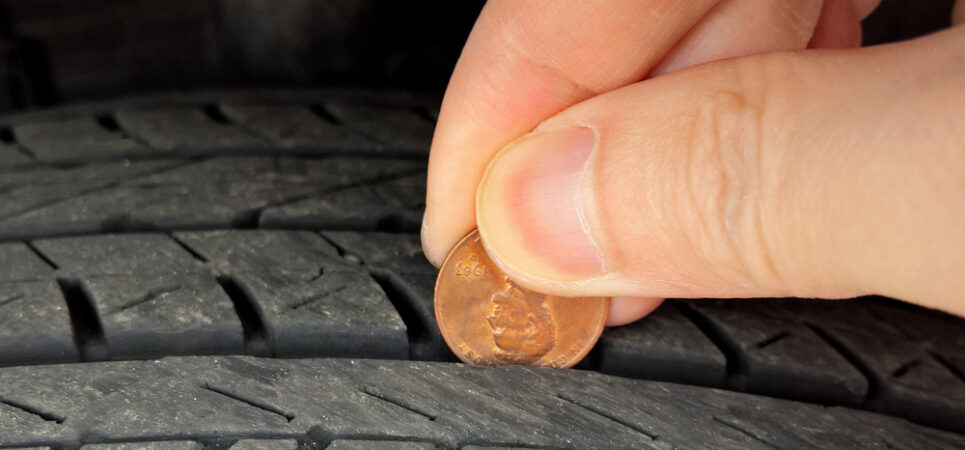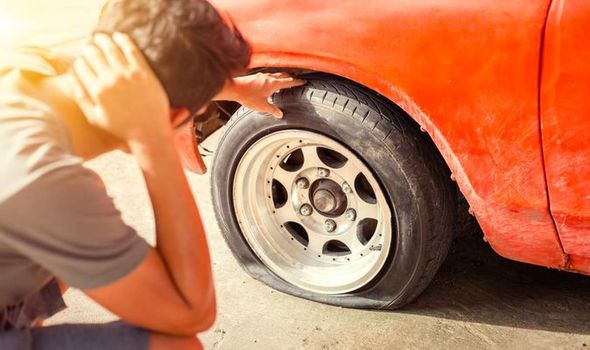What’s Considered Low Tire Pressure? 5 Signs Your Tires Need Attention
Low tire pressure refers to a condition where the air pressure in a tire is below the recommended level. This can lead to reduced fuel efficiency, increased tire wear, and compromised vehicle handling and safety.
It is essential to regularly check and maintain proper tire pressure to ensure optimal performance on the road. Proper tire pressure is crucial for the safe and efficient operation of a vehicle. When the air pressure in a tire drops below the recommended level, it is considered to be low tire pressure.
This can have significant implications on both the performance and safety of the vehicle. We will explore the various aspects of low tire pressure, including its causes, effects, and how to identify and address this issue promptly. By understanding the importance of maintaining proper tire pressure, you can ensure a smoother and safer driving experience while also maximizing fuel efficiency and prolonging the lifespan of your tires.

Credit: tuckertirecompany.com
Signs Your Tires Need Attention
Low tire pressure can lead to various issues that can compromise your driving experience and vehicle’s performance. It is important to be aware of the signs that indicate your tires need attention. One of the key indicators of low tire pressure is a persistent dashboard warning light. If you notice this light illuminated, it is crucial to check your tire pressure immediately. Additionally, a decrease in fuel efficiency can also be a sign of low tire pressure. Uneven wear on the edges of your tires or a bumpy or uncomfortable ride may indicate the need for tire maintenance. Maintaining proper tire pressure is essential for optimal handling, traction, and braking. Regularly checking your tire pressure and inflating them to the recommended levels not only ensures your safety but also extends the lifespan of your tires. By taking care of your tires, you can enjoy a smoother, safer, and more efficient driving experience.
Tire Pressure Warning Light
When the tire pressure warning light illuminates on your vehicle’s dashboard, it is crucial to understand the implications and take immediate action. The warning light is designed to alert you when the tire pressure drops below the recommended level. Several factors can trigger the illuminated warning light, such as tire leaks, temperature fluctuations, or faulty sensors. It is essential to address the issue promptly to avoid potential hazards and further damage to your tires. Upon seeing the warning light, check your tire pressure using a gauge and compare it to the manufacturer’s recommended PSI. If the pressure is low, inflate your tires to the required level or visit a professional for assistance. Keeping your tires properly inflated not only improves safety but also ensures better fuel efficiency and longer tire life.
Visual Inspection
Performing a visual inspection is a crucial step in identifying low tire pressure. By visually checking the tires, you can easily spot signs of underinflation or overinflation. Look out for any visibly deflated or bulging tires, as these are clear indicators of low tire pressure. Additionally, examine the tread wear patterns, as uneven wear can also suggest improper inflation.
It’s important to remember that external factors can affect tire pressure. Fluctuations in temperature can cause tire pressure to decrease or increase. For example, during colder weather, tire pressure tends to decrease, while it tends to increase in hotter conditions.
Regularly visually inspecting your tires can help you detect and address low tire pressure issues promptly. Maintaining the proper tire pressure not only ensures your safety on the road but also contributes to better fuel efficiency and longer tire lifespan.
Uneven Tire Wear
In this blog post, we will discuss the link between low tire pressure and uneven tire wear. Underinflation of tires is a common cause of uneven tread wear patterns. When tire pressure is too low, the outer edges of the tread tend to wear faster than the center, resulting in uneven wear. This can be easily observed by checking the tread depth across the tire. Uneven tire wear can have potential risks and consequences, including reduced traction, decreased fuel efficiency, and increased likelihood of tire blowouts. It is important to regularly monitor and maintain the correct tire pressure to avoid these issues. Neglecting uneven tire wear can lead to the need for premature tire replacement and compromised safety on the road. Make sure to check your tire pressure regularly and inflate them to the recommended levels for optimal performance and longevity.
Handling And Performance Issues
Low tire pressure can have a significant impact on the handling and performance of a vehicle. When tire pressure is below the recommended level, drivers may experience a range of symptoms that can affect their ability to control the vehicle. One of the most noticeable effects of underinflated tires is poor handling. The tires may feel mushy or unresponsive, making it challenging to steer accurately. Additionally, the vehicle’s performance may be compromised, particularly in terms of braking distance and traction. With low tire pressure, the braking distance can increase, requiring more time and space to come to a complete stop. Furthermore, the tires’ decreased traction on the road can result in reduced grip and stability, making the vehicle more prone to skidding or sliding in hazardous conditions.
Tire Bulging And Cracking
Tire Bulging and Cracking
|
Dangers associated with overinflated tires
|
Strategies For Maintaining Proper Tire Pressure
Proper tire pressure is crucial for the safety and performance of your vehicle. Maintaining the correct tire pressure can help prevent accidents, improve fuel efficiency, and extend the lifespan of your tires. To ensure accurate tire pressure measurements, it is essential to use a reliable tire pressure gauge. There are various types of tire pressure gauges available, including digital and manual ones. It is recommended to refer to the vehicle manufacturer’s guidelines or consult a professional mechanic for the optimal tire pressure for your specific vehicle.
When filling your tires, it is important to follow the recommended tire pressure for your vehicle. Underinflated tires can lead to increased rolling resistance, decreased fuel efficiency, and uneven wear. Overinflated tires, on the other hand, can result in a harsh ride, reduced traction, and potential tire damage. Regularly checking and adjusting the tire pressure can help ensure optimal performance and safety on the road.
Regular Tire Maintenance
htmlRegular tire maintenance is essential for the optimal performance and safety of your vehicle. By scheduling routine tire maintenance, you can ensure that your tires are in good condition at all times.
When it comes to tire maintenance, it is advisable to consult professionals such as certified mechanics or tire specialists who are trained to inspect and adjust tire pressure. They can accurately determine whether your tire pressure is below the recommended levels.
Regular tire care offers numerous benefits that contribute to the longevity and safety of your tires. Proper tire maintenance helps prevent uneven tread wear, improves fuel efficiency, enhances traction, and ensures optimal handling on the road. It also reduces the risk of blowouts and accidents due to underinflated or overinflated tires.
By regularly checking and maintaining your tire pressure, you can avoid unnecessary expenses, extend the lifespan of your tires, and drive with confidence knowing that your vehicle is operating at its best.
Frequently Asked Questions Of Whats Considered Low Tire Pressure
At What Tire Pressure Is Too Low?
Tire pressure is considered too low if it falls below the recommended level.
Is 31 Tire Pressure Too Low?
Yes, a tire pressure of 31 is considered to be too low. It is important to maintain the recommended tire pressure to ensure safety and optimal performance of your vehicle.
Is 2 Psi Over Bad?
Increasing tire pressure by 2 PSI is not necessarily bad, but it may affect the handling and comfort of the vehicle. Overinflating tires can cause less traction, uneven wear, and a harsher ride. It’s important to refer to the recommended tire pressure in your vehicle’s manual for optimal performance and safety.
Should I Ignore Low Tire Pressure?
Ignoring low tire pressure can lead to several risks, including decreased fuel efficiency, reduced tire lifespan, and compromised safety on the road. Maintaining proper tire pressure is crucial for optimal performance and should not be ignored.
Conclusion
To ensure optimal vehicle performance and safety, it’s crucial to keep your tire pressure within the recommended range. Driving with low tire pressure can have detrimental effects on your vehicle’s fuel efficiency, handling, and overall tire lifespan. By regularly checking and maintaining the correct tire pressure, you can avoid potential risks on the road and extend the life of your tires.
So, take a few minutes to check your tire pressure and keep them properly inflated. Safe travels!








